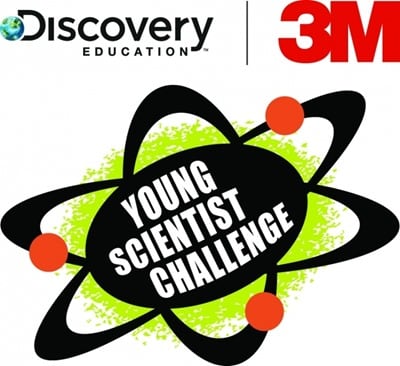If your middle-schooler has an aptitude for science, you might want to consider having them enter the Discovery Education 3M Young Scientist Challenge. Not only do they get the opportunity to dive deeper into scientific concepts that they may be interested in, they also have a chance of winning the $25,000 grand prize and claim the title of “America’s Top Young Scientist.”
If you or you child or student are thinking about entering the Challenge, you better do so soon. The deadline to enter is April 22, 2014.
About the Discovery Education 3M Young Scientist Challenge
The Challenge, which started in 1999, is open to students of grades 5-8 and is designed to build excitement around science exploration, innovation and communication within the United States. From January 2014 through April 22, 2014, the Challenge is open to entry. This is the time where students, teachers and parents can compile a video entry of the experiment, project or idea and submit it to judging.
This year’s Challenge, according to the official site, is around identifying “an everyday problem that directly impacts them, their family, their community, or the global population.” Additionally, these ideas must be completely new, be an innovation or solution and cannot simply be repurposing an existing product. Kids need to think outside of the box on this and dare to be experimental.
The Discovery Education 3M Young Scientist Challenge video submission needs to be 1 to 2 minutes long, and should map to the following criteria:
- Explain the problem and how it impacts the student and their community
- Describe the innovation or solution that could solve or help the problem
- Discuss the technology, science, engineering and/or math involved in the innovation
- Show how their solution or innovation affects or impacts the problem they identified
The Challenge site outlines some “Thought Starters” (but my guess is that you should truly try to be as original as possible):
- How We Communicate – How can communication be expanded to remote areas or support different languages or cultures? How could it assist with impairments or other physical challenges? How could it help in emergency situations?
- How We Move – How to reduce accidents or traffic jams or increase the efficiency, comfort or safety of automobiles? How to make transportation more cost effective or promote non-energy consuming means of transportation.
- How We Stay Healthy – How can we clean water for drinking or provide healthy food to everyone? How can we make health problems more easily detectable or reduce sports injuries?
- How We Make a Difference – How can we support emergency or first aid efforts or improve prediction or planning for natural disasters? How can we reduce impact of energy production or recover previously polluted environments?
There is clear criteria on the judging process, specifically:
- Creativity (30%)
- Scientific knowledge (30%)
- Persuasiveness/Effective communication (20%)
- Overall presentation (20%)
Personally, I believe that this is a good balance of criteria as it helps showcase a wide range of skills that children could use in the future.
The Prizes
OK, this is the good part. The winner of the challenge will receive $25,000 and be crowned “America’s Top Young Scientist.” Oh, and supposedly there is also a trip to Costa Rica!
The 10 finalists that are selected get an expense-paid trip to St. Paul, MN to present their innovative projects in October, 2014. State merit finalists will also be recognized.
Three runners up will also receive a trip to Costa Rica. 6 honorable mentions will get a $500 excursion.
Also each national finalist receives a summer mentorship with a 3M scientist where they both work together on an “innovation” assignment. This “virtual internship” has a series of pre-defined objectives with resources and support provided. They also win $1000!
Get Creative & Scientific and Support STEM!
Remember, this science challenge must have entries in by April 22, 2014. If you enjoy doing the science fair at school or if you believe your child or student has a particular passion for science or is very inventive, encourage them to think creatively and scientifically and submit an entry! It’s important to build inspiration around STEM (Science, Technology, Engineering and Math) concepts within our youth if they want to be globally competitive.
Take a look at some of the past winners for inspiration. Peyton Robertson was the winner 2013 with his “SOS – Sandless Operation Sandbag – to reduce salt water flood damage” entry. Just watch his video entry to see how incredibly smart ideas could be.
[youtube http://youtu.be/TWTEceGEyYU]
To all of those thinking about entering, best of luck!
Disclosure Text : This is a sponsored post and I have received compensation to prepare to write it as well as write it. All opinions within this article, unless otherwise noted, are my own and are not subject to the editorial review from any 3rd party. More information can be found in my About page as well as here.
HTD says: Do you have a young scientist? Get him or her to enter the Discovery Education 3M Young Scientist Challenge!

![[46993] Peyton.jpg_low](https://www.hightechdad.com/wp-content/uploads/2014/04/46993-Peyton.jpg_low_thumb.jpg)
![[46995] KatieHudek-GraftonMA.jpg_low](https://www.hightechdad.com/wp-content/uploads/2014/04/46995-KatieHudek-GraftonMA.jpg_low_thumb.jpg)


1 comment
hannahlucy07
what a great post! thank you! )
Best Help Desk
Software